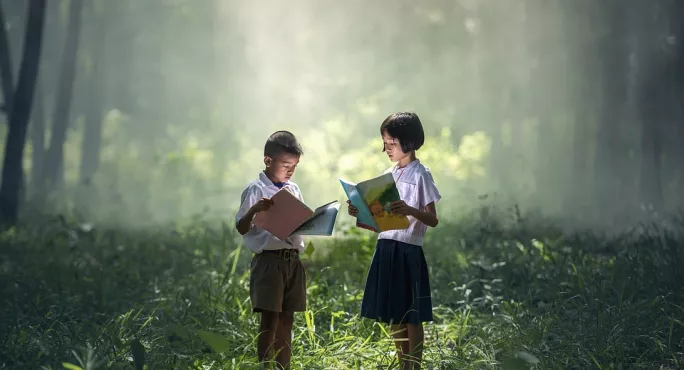It was Roald Dahl Book Day and after a whole school assembly, my class returned to their classroom buzzing with the joys of children’s fiction. Their stimulus was a video-clip of Mr Twit devouring a plate of spaghetti made from worms.
After we settled down, I showed them a selection of Roald Dahl books, I had brought in for the day’s learning. “What shall we do with these books? How can we get to know them?” I asked.
At once, almost as a chorus, my class replied, “Let’s do ‘extreme reading’, Miss!”
“What a great idea,” I replied, “Let’s do it!”
For those of you wondering what “Extreme Reading” is all about, let me explain how my class and I came up with the concept in the first place. It was during one of the first lessons of the Autumn term, one of those lessons you teach to find out about your new class, and also - let’s be fair - one of those lessons you know Ofsted aren’t going to turn up to watch.
The lesson began with the question: “Why is reading a life skill?” Taking suggestions from the children, I filled an entire flipchart sheet listing all the times and places reading is necessary. The children were enthusiastic and their ideas reflected their understanding of their own environment. They all knew, for example, that reading involved both pictures and diagrams, not simply words. They knew that you needed reading skills for interpreting road-traffic signs, as well as for reading instructions for a recipe.
Discovering a love of reading
During this animated discussion, I noticed one girl, who was particularity engaged. I was surprised, since this girl was a low-ability reader, who never read at home and who was always a most unwilling participant during “silent reading” sessions. And yet, this girl was almost on fire - her contributions to the discussion outstripping her more-able peers. It seemed likely that she had suddenly understood the point of reading. It now remained for me, as a teacher, to help her discover a love for the reading of books as well.
Later, we returned to our class novel, The Firework Maker’s Daughter by Philip Pullman. I explained to the class that we were going to work on developing expression when reading aloud. The plan was to use an agreed extract from the novel. The children would work in pairs using an iPad. Each pair would video their partner reading the extract aloud. Afterwards, each pair would then analyse each other’s reading using playback and agree a maximum of three areas for each of them to develop. They would then video each other reading the same passage again. The class were thrilled with this idea. However, they quickly suggested an impediment to a successful outcome.
“Where are we going to do the videoing?” they asked, “It’ll be very hard to concentrate if we all do it in the classroom.”
“You’re right,” I replied, “Perhaps we need to find different places within school?”
“Can we do it anywhere we like, Miss? I mean it would be good fun if we could read in a tree, or on the climbing frame.”
And so, we agreed, that so long as they were careful, we would use “extreme reading” situations to facilitate their reading assessment.
‘Extreme reading released her’
I need hardly say that this lesson was extremely successful, not simply in terms of pupil enjoyment but also because at the end of it, I received some excellent video footage of my pupils reading aloud for my assessment file.
Moreover, this reading experience transformed my reluctant girl reader. After this, she was not merely a willing participant during whole class reading lessons, but she also read regularly at home and even progressed to attending author signings at local bookshops. At the end of the year, she achieved a scaled score of 108 in the KS2 reading test.
It is my belief that reading suddenly became fun for her that day. It was also cool, and there was a purpose to it. Previously, she had barely visited the book corner. If she went there at all, it was because she had been asked to choose a new book. Perhaps, for her, it had been an uncomfortable place? A dull, pointless place? A place where she lacked the confidence to navigate her way around? Extreme reading released her. Suddenly, she saw a book as a friend you could take with you anywhere, not something confined to a corner of the classroom.
Amelia Ellis is a Year 5-6 teacher and English lead at Woolavington Village Primary School, Somerset. She tweets @AmeliaEllis23
Want to keep up with the latest education news and opinion? Follow Tes on Twitter and like Tes on Facebook



